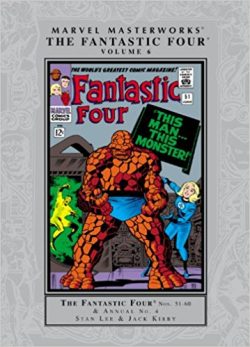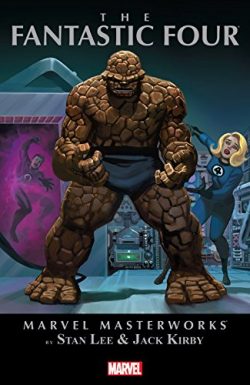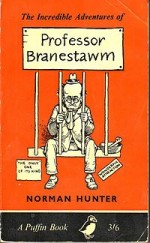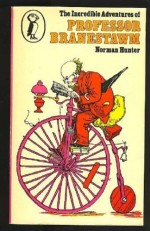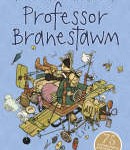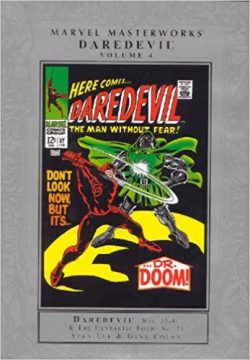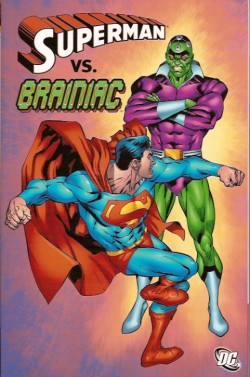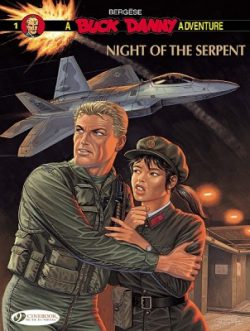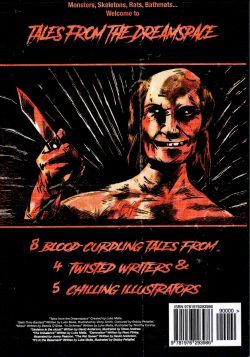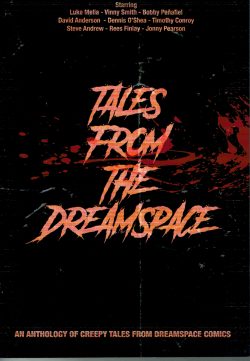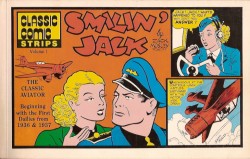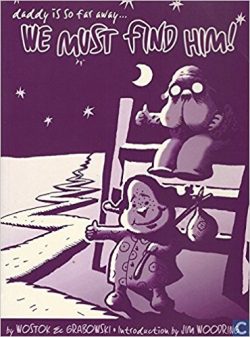
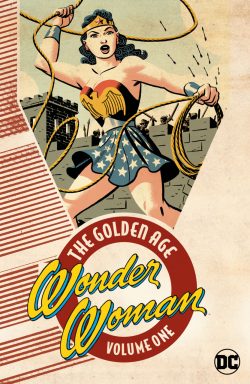
By William Moulton Marston & Harry G. Peter & various
ISBN: 978-1-4012-7444-3
Wonder Woman was famously created by polygraph pioneer William Moulton Marston – apparently at the behest of his formidable wife Elizabeth – and illustrated by Harry G. Peter in a well-intentioned attempt to offer girls a positive and forceful role model.
Her spectacular launch and preview (that’s the comicbook heroine, not Mrs. Marston) came in an extra feature inside All Star Comics #8, home of the immortal Justice Society of America and one of the company’s most popular publications.
The Perfect Princess gained her own series and the cover-spot in new anthology title Sensation Comics launching a month later and was a huge and instant hit. She won her own eponymous title in late Spring of that year (cover-dated Summer 1942).
Using the nom de plume Charles Moulton, Marston scripted all the Amazing Amazon’s many and miraculous adventures until his death in 1947, whereupon Robert Kanigher took over the writer’s role. Venerable co-creator H.G. Peter illustrated almost every WW tale until his own death in 1958.
Spanning December 1941 – February/March 1943, this superb full-colour deluxe softcover compilation (also available as an eBook edition) collects that seminal debut from All Star Comics #8, and her every iconic adventure from Sensation Comics #1-14, Wonder Woman #1-3 plus the first adventure from anthological book of (All) Stars Comics Cavalcade #1 and begins with ‘Introducing Wonder Woman’…
On a hidden island of immortal super-women, an American aviator crashes to Earth. Near death, Captain Steve Trevor of US Army Intelligence is nursed back to health by young Princess Diana. Fearing her growing obsession with the man, her mother Queen Hippolyte reveals the hidden history of the Amazons: how they were seduced and betrayed by men but rescued by the goddess Aphrodite on condition that they thenceforward isolate themselves from the rest of the world and devote their eternal lives to becoming ideal, perfect creatures.
However, after Trevor explains the perfidious spy plot which accidentally brought him to the Island enclave, divine Athena and Aphrodite appear and order Hippolyte to assign an Amazon warrior to return with the American to fight for freedom and liberty.
Hippolyte diplomatically and democratically declares an open contest to find the best candidate and, despite being forbidden to participate, young Diana enters and wins. Accepting the will of the gods, the worried mother outfits Diana in the guise of Wonder Woman and sends her out to Man’s World…
A month later the story continued where the introduction had left off. Sensation Comics #1 declares ‘Wonder Woman Comes to America’: revealing the eager immigrant returning the recuperating Trevor to the modern World before trouncing a gang of bank robbers and falling in with a show business swindler. The major innovation here is the newcomer buying the identity of lovelorn Army nurse Diana Prince; elegantly allowing the Amazon to be close to Steve whilst enabling the heartsick medic to join her own fiancé in South America…
Even with all that going on, there was still room for Wonder Woman and Captain Trevor to bust up a spy ring attempting to use poison gas on a Draft induction centre before Steve breaks his leg and ends up in hospital again, where “Nurse Prince†is assigned to look after him…
Sensation #2 introduced deadly enemy agent ‘Dr. Poison’ in a cannily crafted tale which also debuted the most radical comedy sidekicks of the era…
The plucky fun-loving gals of the Holliday College for Women and their chubby, chocolate-gorging Beeta Lamda sorority-chief Etta Candy would get into trouble and save the day in equal proportions for years to come, constantly demonstrating Diana’s – and Marston’s – philosophical contention that girls, with the correct encouragement, could accomplish anything that men could …
With the War raging and in a military setting, espionage and sabotage were inescapable plot devices. ‘A Spy at the Office’ finds Diana arranging a transfer to the office of General Darnell as his secretary so that she can keep a closer eye on the finally fit Steve. She isn’t there five minutes before uncovering a ring of undercover infiltrators amongst the typing pool and saving her man from assassination.
Unlike most comics of the period, Wonder Woman followed a tight continuity. ‘School for Spies’ in #4 sees some of those fallen girls murdered by way of introducing inventive genius and Nazi master manipulator Baroness Paula von Gunther who employs psychological tricks to enslave girls to her will and set otherwise decent Americans against their homeland.
Even Diana succumbs to her deadly machinations until Steve and the Holliday Girls crash in…
America’s newest submarine is saved from destruction and a cunning gang of terrorists brought to justice in ‘Wonder Woman versus the Saboteurs’ before issue #6 has the Amazing Amazon accepting a ‘Summons to Paradise’ to battle her immortal sisters in Kanga-riding duels before receiving her greatest weapon: an unbreakable Lasso of Truth which can compel and control anybody who falls within its golden coils.
It proves very handy when Paula escapes prison and uses her invisibility formula to wreak havoc on American coastal defences…
‘The Milk Swindle’ is a pure piece of 1940s social advocacy drama with homegrown racketeers and Nazi von Gunther joining forces to seize control of America’s milk supply with the incredibly long-sighted intention of weakening the bones of the country’s next generation of soldiers.
Closely following in Sensation #8 is ‘Department Store Perfidy’ wherein the Amazon goes undercover in the monolithic Bullfinch emporium to win better working conditions and fair pay for the girls employed there.
There was a plethora of surprises in #9 with ‘The Return of Diana Prince’ from South America. Now Mrs Diana White, the young mother needs her job and identity back until her inventor husband can sell his latest invention to the US army. Luckily, Wonder Woman and an obliging gang of saboteurs help to expedite matters…
The next major landmark was the launch of the Amazon’s own solo title. The first quarterly opens here a text feature on the Amazon’s pantheon of godly patrons in ‘Who is Wonder Woman?’ after which comic action commences with a greatly expanded revision of her first appearance in ‘A History of the Amazons: The Origin of Wonder Woman’. This is swiftly followed by the beguiling mystery tale ‘Wonder Woman Goes to the Circus’ wherein Diana had to solve the bizarre serial murders of the show’s elephants and Paula von Gunther again rears her shapely head in ‘Wonder Woman versus the Spy Ring’ wherein the loss of the Golden Lasso almost causes the heroine’s demise and ultimate defeat of the American Army…
The issue ends with ‘The Greatest Feat of Daring in Human History’ as Diana and Etta head for Texas, only to become embroiled in a sinister scheme involving Latin Lotharios, lady bullfighters, lethal spies and a Nazi attempt to conquer Mexico…
Back in Sensation Comics #10 (October 1942) ‘The Railroad Plot’ celebrates Steve and Wonder Woman’s first anniversary by exposing a sinister plan devised by Japanese and German agents to blow up New York using the labyrinth of subway tunnels under the city, whilst ‘Mission to Planet Eros’ debuts the Princess’ long line of cosmic fantasy exploits as the Queen of Venus requests Diana’s aid in saving an entire planetary civilisation from gender inequality and total breakdown, before ‘America’s Guardian Angel’ – from Sensation #12 – finds the Warrior Princess accepting an offer to play herself in a patriotic Hollywood movie, only to find the production had been infiltrated by the insidious Paula and her gang of slave-girls…
Preceded by an illustrated prose piece about ‘The God of War’, Wonder Woman #2 comprises a four-part epic introducing the Astounding Amazon’s greatest enemy in ‘Mars, God of War’. He apparently instigated the World War from his HQ on the distant red planet but chafes at the lack of progress since Wonder Woman entered the fray on the side of the peace-loving allies. He now opts for direct action rather than trust his earthly pawns Hitler, Mussolini and Hirohito…
When Steve goes missing, Diana allows herself to be captured and ferried to Mars. Here she starts disrupting the efficient working of the war-god’s regime and fomenting unrest amongst the slave population, before rescuing Steve and heading home to Earth. ‘The Earl of Greed’, one of Mars’ trio of trusted subordinates, takes centre stage in the second chapter with orders to recapture Steve and Diana at all costs.
As the bold duo attempt to infiltrate Berlin, Greed uses his influence on Hitler to surreptitiously redirect the German war effort, using Gestapo forces to steal all the USA’s gold reserves…
With Steve gravely injured, the Amazon returns to America and whilst her paramour recuperates, uncovers and foils the Ethereal Earl’s machinations to prevent much-needed operating funds from reaching Holliday College where young girls learn to be independent free-thinkers…
With Greed thwarted, Mars next dispatches ‘The Duke of Deception’ to Earth where the spindly phantom impersonates Wonder Woman and frames her for murder. Easily escaping from prison, the Princess of Power not only clears her name but also finds time to foil a Deception-inspired invasion of Hawaii, leaving only ‘The Count of Conquest’ free to carry out Mars’ orders.
His scheme is simple: through his personal puppet Mussolini, the Count tries to physically overpower the Hellenic Heroine with a brutal giant boxing champion even as Italian Lothario Count Crafti attempts to woo and seduce her. The latter’s wiles actually worked too, but capturing and keeping the Amazing Amazon were two different things entirely and after breaking free on the Red Planet, Diana delivers a devastating blow to the war-machine of Mars…
This issue then ends with a sparkling double page patriotic plea when ‘Wonder Woman Campaigns for War Bonds’…
Sensation Comics #13 (January 1943) follows with ‘Wonder Woman is Dead’ as a corpse wearing the Amazon’s uniform is found and the astounded Diana Prince discovers her alter ego’s clothes and the irreplaceable magic lasso are missing…
The trail leads to a diabolical spy-ring working out of General Darnell’s office and an explosive confrontation in a bowling alley, whilst ‘The Story of Fir Balsam’ in Sensation #14 offered a seasonal tale concerning lost children, an abused mother and escaped German aviators which was all happily resolved around a lonely pine tree, after which the Immortal Warrior celebrated her next publishing milestone…
The 1938 debut of Superman propelled National Comics to the forefront of their fledgling industry and a year later the company was licensed to produce a commemorative comicbook celebrating the opening of the New York World’s Fair.
The Man of Tomorrow prominently featured on the appropriately titled New York World’s Fair Comics among such four-colour stars as Zatara, Butch the Pup, Gingersnap and The Sandman. In 1940 another abundant premium emerged with Batman added to the roster, and the publishers felt they had an item and format worth pursuing commercially.
The spectacular card-cover 96-page anthologies had been a huge hit: convincing the editors that an over-sized anthology of their pantheon of characters, with Superman and Batman prominently featured, would be a worthwhile proposition. Thus, the format was retained for a wholly company-owned, quarterly high-end package, retailing for the then-hefty price of 15¢.
Launching as World’s Best Comics #1 in Spring 1941, the book transformed into World’s Finest Comics from #2, beginning a stellar 45-year run which only ended as part of the massive clear-out and decluttering exercise that was Crisis on Infinite Earths. During the Golden Age however, it remained a big blockbuster bonanza of strips to entice and delight readers…
At this time National/DC was in an editorially-independent business relationship with Max Gaines that involved shared and cross promotion and distribution for the comicbooks released by his own outfit All-American Publications. Although technically competitors if not rivals, the deal included shared logos and advertising and even combining both companies’ top characters in the groundbreaking All Star Comics as the Justice Society of America.
However, by 1942 relations between the companies were increasingly strained – and would culminate in 1946 with DC buying out Gaines, who used the money to start EC Comics.
All-American thus decided to create its own analogue to World’s Finest, featuring only AA characters. The outsized result was Comics Cavalcade…
Cover-dated December 1942-January 1943 – and following Frank Harry’s gloriously star-studded cover to Comic Cavalcade #1 – Wonder Woman’s fourth regular star slot began with the company superstar solving the ‘Mystery of the House of the Seven Gables‘ (as ever the fruits of Marston & Peter’s fevered imaginations) wherein Diana Prince stumbles upon a band of Nazi spies. All too soon the Amazing Amazon needs the help of some plucky youngsters to quash the submarine-sabotaging brutes…
Wonder Woman #3 then dedicates its entirety to the return of an old foe; commencing with ‘A Spy on Paradise Island’ as the undergrads of Holliday College for Women girls – and Etta Candy – are initiated into some pretty wild Amazon rites on Paradise Island.
Sadly the revels inadvertently allow an infiltrator to gain access and pave the way for an invasion by Japanese troops…
Naturally Wonder Woman and the Amazon prevail on the day but the sinister mastermind behind it all is revealed and quickly strikes back in ‘The Devilish Devices of Baroness Paula von Gunther.’
Whilst the on-guard Amazons build a women’s prison that will be known as “Reform Islandâ€, Wonder Woman – acting on information received by the new inmates – trails Paula and is in time to crush her latest scientific terror: an invisibility ray…
‘The Secret of Baroness von Gunther’ offers a rare peek at a villain’s motivation when the captured super-spy reveals how her little daughter Gerta has been a hostage of the Nazis for years and remains a goad to ensure the genius’ total dedication to the German cause… Naturally, the Amazing Amazon instantly determines to reunite mother and child at all costs after which ‘Ordeal by Fire’ confirms the Baroness aiding Diana and Steve in dismantling the spy network and slave-ring the Nazis had spent so long building in America… but only at great personal and physical cost to the repentant Paula…
Much has been posited about subtexts of bondage and subjugation in Marston’s tales – and, to be frank, there really are lots of scenes with girls tied up, chained or about to be whipped – but I just don’t care what his intentions (subconscious or otherwise) might have been: I’m more impressed with the skilful drama and incredible fantasy elements that are always wonderfully, intriguingly present: I mean, just where does the concept of giant war-kangaroos come from?
Exotic, baroque, beguiling and uniquely exciting, these Golden Age adventures of the World’s Most Famous female superhero are timeless, pivotal classics in the development of comicbooks and still provide lashings of fun and thrills for anyone looking for a great nostalgic read. If that’s you, you know what you need to do…
© 1941, 1942, 1943, 2017 DC Comics. All Rights Reserved.
